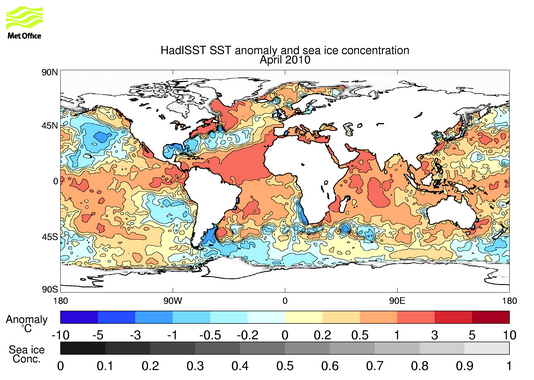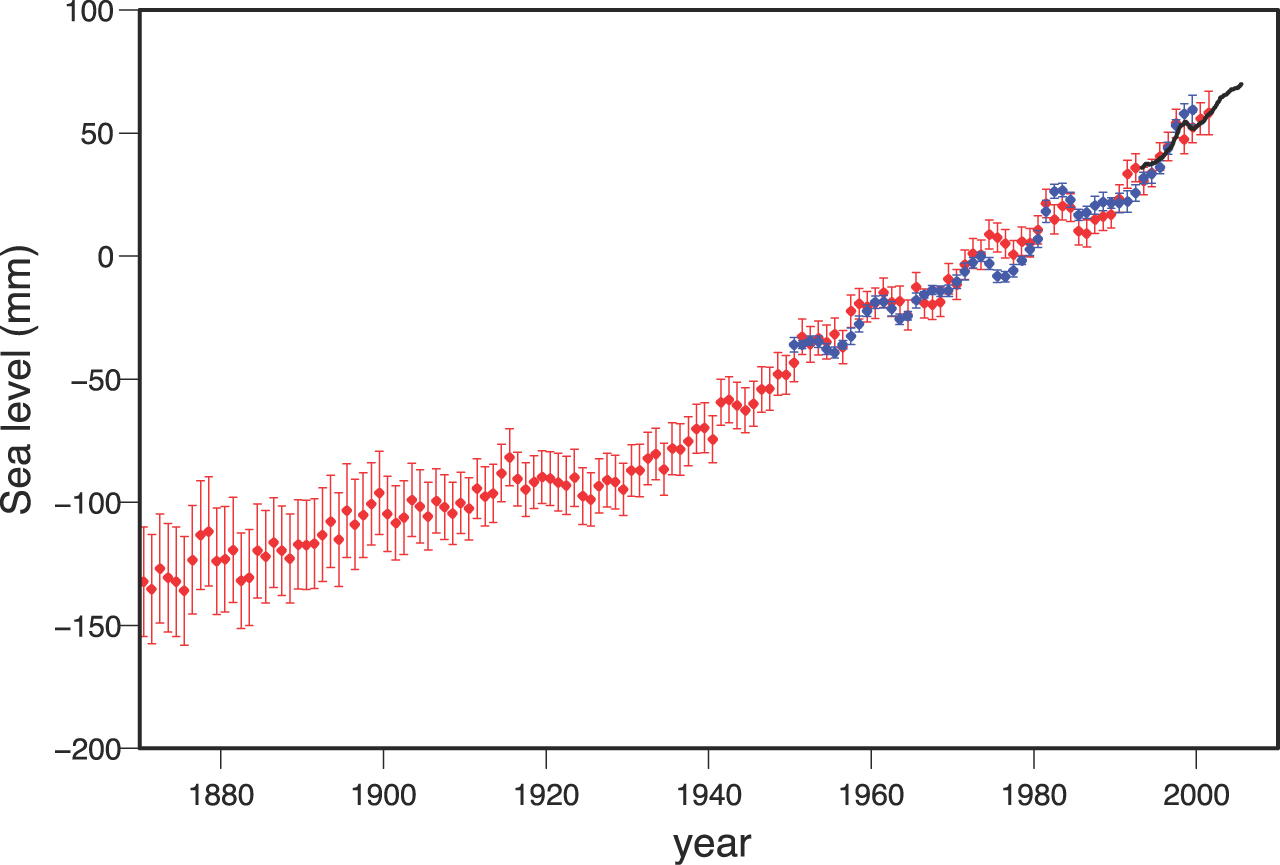

Image Information
Upper (left to right):
- US steam frigate Mississippi, in the Gulf of Mexico, March 1847: Library of Congress, Prints & Photographs Division [reproduction number LC-USZC2-3129] (originally published by N. Currier, New York, 1848).
- Florida peninsula, January 1985: NASA Space Shuttle Earth Observations Photography database [photo STS51C-44-0026].
- TAO (Tropical Ocean Atmosphere) buoy and anemometers on NOAA ship Ka'imimoana. Photo by Jason Poe, courtesy of TAO Project Office.



- HadISST SST and sea ice concentration for April 2010 (Rayner, N.A., D.E. Parker, E.B. Horton, C.K. Folland, L.V. Alexander, D.P. Rowell, E.C. Kent, and A. Kaplan, 2003: Global analyses of sea surface temperature, sea ice, and night marine air temperature since the late nineteenth century. J. Geophys. Res., 108(D14), 4407, doi:10.1029/2002JD002670).
- Upper-ocean heat content anomaly (OHCA) curves using published methods (Lyman, J.M., S.A. Good, V.V. Gouretski, M. Ishii, G.C. Johnson, M.D. Palmer, D.M. Smith, and J.K. Willis, 2010: Robust warming of the global upper ocean. Nature, 465, 334-337, doi:10.1038/nature09043).
- Figure 5.13 from IPCC, 2007: Contribution of Working Group I to the Fourth Assessment Report of the Intergovernmental Panel on Climate Change. Cambridge University Press. Caption: Annual averages of the global mean sea level (mm). The red curve shows reconstructed sea level fields since 1870 (updated from Church and White, 2006); the blue curve shows coastal tide gauge measurements since 1950 (from Holgate and Woodworth, 2004) and the black curve is based on satellite altimetry (Leuliette et al., 2004). The red and blue curves are deviations from their averages for 1961 to 1990, and the black curve is the deviation from the average of the red curve for the period 1993 to 2001. Error bars show 90% confidence intervals